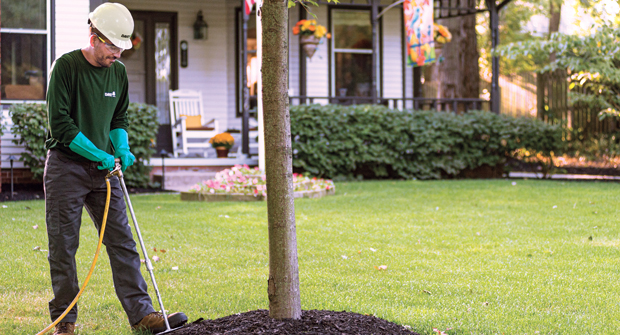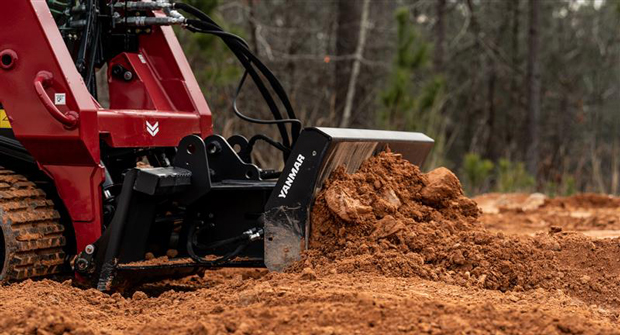Trees may seem solid and stoic, but they need some TLC heading into dormancy for the winter season. Tree care experts provide tips and care suggestions to consider as part of your end-of-summer routine for your commercial and residential clients.
The Physical
Addressing a tree’s physical needs heading into winter includes managing safety, access, clearance and aesthetic issues, explains Lou Meyer, an arborist and regional business developer for The Davey Tree Expert Co. based in Ellicott City, Md.
From a safety perspective, address dead branches and limbs to prevent them from breaking free under heavy snow or freezing rain. In addition, a thorough inspection should be conducted, seeking signs of stress and injury. For example, sap flow will indicate a structural wound on a tree, and the presence of fungus indicates dead plant matter.
To mitigate problems for vehicles and pedestrians, prune back branches hanging over roads and walkways. Meyer suggests branches should be between 12 and 14 feet off roadways and 8 to 10 feet over sidewalks.
Likewise, trim limbs and branches back from 6 to 8 feet off building roofs and siding, and be sure branches are not obstructing nearby lights and security cameras.
“Freezing rain and heavy snowpack can be a problem for tree limbs, especially with pines, which are susceptible to heavy loads,” says Andrew St. Clair, an arborist and field rep with Joshua Tree Experts in Allentown, Pa. “When this is the case, discuss with clients reducing the length of branches (on pines and evergreens) to protect from heavy snow and ice loads.”
Nutritional needs
Fall is the best time to feed a tree with a slow-release fertilizer, especially one heavier on potassium and phosphorus than nitrogen.
“By mid-summer, the tree has stopped growing for the year,” Meyer says. “A slow-release (fertilizer) will spread out the feeding and won’t cause an immediate growth spurt in the tree, which we don’t want heading into winter.”
Meyer suggests injecting the nutrients into the soil around the tree to bypass the surrounding turf roots.
“You want to get the fertilizer right to the tree roots and keep the turf roots from stealing the nutrients before the tree can get to it,” he says.
Pay close attention to young trees and trees that experienced excessive drought or heat stress during the summer months or are showing general signs of decline, St. Clair says.
Health and disease
Winter prep is also a time to address any disease or pest issues the tree may be experiencing. But bugs aren’t the only pests. Deer are a nuisance, especially to younger trees and their tender leaves and branches.
If deer are an issue, a topical treatment that lasts three to six months (depending on precipitation) can be applied to repel the deer and discourage winter snacking. Be alert to the presence of fungal activity as well.
“Look for conks, which are shelf fungi that grow on trees,” Meyer says. “Sometimes you get little jelly fungi too. Those are all saprophytic, which are life forms that feed on decay. So, if you see those on limbs, there’s decay present. Now, the fungi aren’t hurting the tree, but they are feeding on what’s hurting the tree and are a symptom that something else is going on that needs to be addressed.”
Cultural practices
At this time of year, mulching around trees is a solid winter-prep practice.
“Mulch is a fantastic insulator that helps keep soil regulated if you’re not getting much snow,” St. Clair says. “Mulch is beneficial in insulating the soil if your area is experiencing cold temperatures but not a lot of snowfall. It also helps retain moisture when it rains or there’s snow melt, which keeps the soil in good condition.”
In addition to moisture retention, mulch provides additional nutrients as the woody fibers decompose over time. Meyer recommends a mulch layer 2 to 3 inches thick and 6 inches away from the tree’s trunk. And if possible, leave the leaves.
“If you can avoid having to clean them all up in the fall, they’re great for the tree,” Meyer says. “Use a mower to shred the leaf material, which will help recharge the soil with nutrients.”


